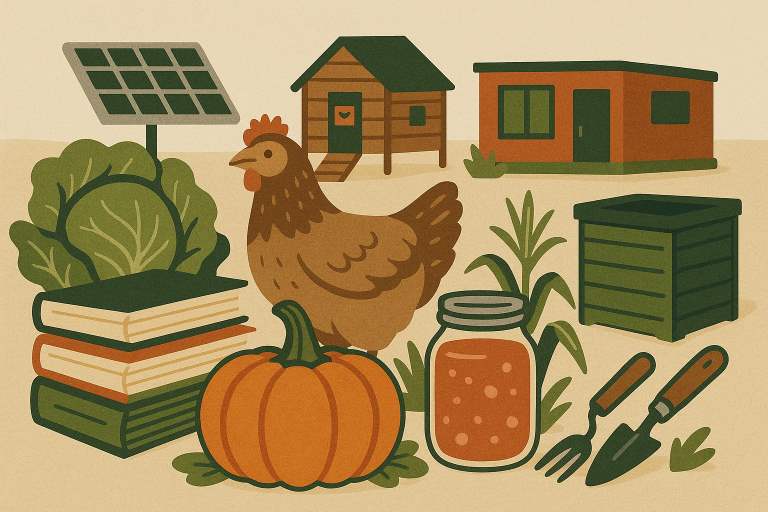Vegetable Garden Plans Part 3 - Starting Seeds
Most vegetable garden plans require you to start seeds indoors, for later transplanting into the garden. This will give you a jump on the season. Good garden plans start with a good planting schedule.
Carefully Curated Resources For The Homesteader and Prudent Property Owner
The world seems to be a little unsettled these days. I'm always looking for ways to make New Terra Farm more self-sufficient and productive.
Here's a few of the best ways I've found to make self-sufficiency happen. Useful Homesteader Resources
Here's how you develop a schedule for your vegetable garden plans:
When you are planning when to start your garden, you need to consider your last spring frost date (LFD) for spring and summer crops, and first fall frost date (FFD) for fall crops (if you live in an area subject to frost).
You also need to know that not all plants are started at once. Many plants have an optimal age or size of transplant that works best, so you have to plan your schedule to get the plants into the garden at the right times for maximum survivability and to extend the harvest.
Here's an example for growing broccoli:
Lets assume your last frost date is May 17, like here at the farm. Broccoli is a cold-tolerant plant; it can be transplanted out into your garden several weeks before last spring frost. And the optimum age of a broccoli transplant is about 5 weeks.
So, you would start your first broccoli seeds indoors around mid-March; that is, May 17 minus 4 weeks to plant out minus 5 weeks to grow a good-sized broccoli transplant = March 15 seed starting date.
This is the kind of planning we do for our market garden, and the kind of information you need to include in your home vegetable garden plan.
Seed starting basics
We suggest you use 2" peat pots to start your seeds. These are great for the home gardener because the seedlings can subsequently be planted in the garden, peat pot and all.
Fill your peat pots about 3/4 full with dampened seed starting mix. Put the seeds in the pots, and cover them lightly, no more than one-eighth to one-quarter inch deep.
Put the pots in plant trays and cover with clear dome covers until germination (4-10 days, depending on the seed). Keep in a warm place that receives ,b>at least 12 hours of light. We suggest using florescent lights placed 2-3 inches over the plants; use a timer to provide 12-14 hours of light daily. Important: Remove the tray covers when the seeds germinate.
Check the trays each day to make sure they don’t dry out; add water as needed to keep them moist. Inconsistent watering at the seedling stage can cause problems with the plants later on in the garden.
Next: Planting out your transplants. Following the schedule in your home vegetable garden plan, here's
how to plant your garden
New for 2020 - get my Free Organic Market Gardening Start-up Guide
Recent Articles
-
Farm grown reviews of products recommended by New Terra Farm
Dec 04, 25 06:26 AM
Find great farm and garden products in my farm grown reviews -
Best Chicken Coop and Accessories for Small Farms and Homesteads
Nov 30, 25 09:18 AM
Looking for the best chicken coop? Here are the top coops, accessories, nest boxes, and gear to build a safe, productive poultry setup. -
Community Supported Agriculture Marketing Ideas To Sell Out The Season
Nov 05, 25 05:18 AM
Authentic Community Supported Agriculture marketing ideas to grow loyalty, boost sign-ups, and sell out your CSA every year




